| A dull, overcast day is not ideal for wildlife photography but for landscape/seascapes the flat, diffused light can be good especially for using the long exposures. Today was forecast was to be overcast until mid afternoon and with perfect tidal conditions (high tide on the going out), I packed light with just my 5D camera, a wide and short zoom lens, a ND graduated filter, 1 stop ND and 10 stop ND filter and headed to the coast. I specifically wanted to make the most of this grey, flat lighting with the 10 stop ND filter which combined, can give some nice effects though it’s not to everyone's taste I know. |
 |
| When I arrived on location the tide had just turned and the waves were still crashing against the beach and the coastal defences, still I felt brave and found a reasonably sheltered location on the beach and set my camera up. I managed to take two shots of which neither I was happy with – the better one above – before my nerves failed me. The image below taken with my camera phone, gives an example of the waves hitting the shore close by while the main camera was taking the above image. This was happening on both sides and I was more worried about the spray that was hitting around my camera which isn’t water resistant in any way, especially salt water. The main image makes the scene look calm and tranquil and belies the reality of the situation. |
 |
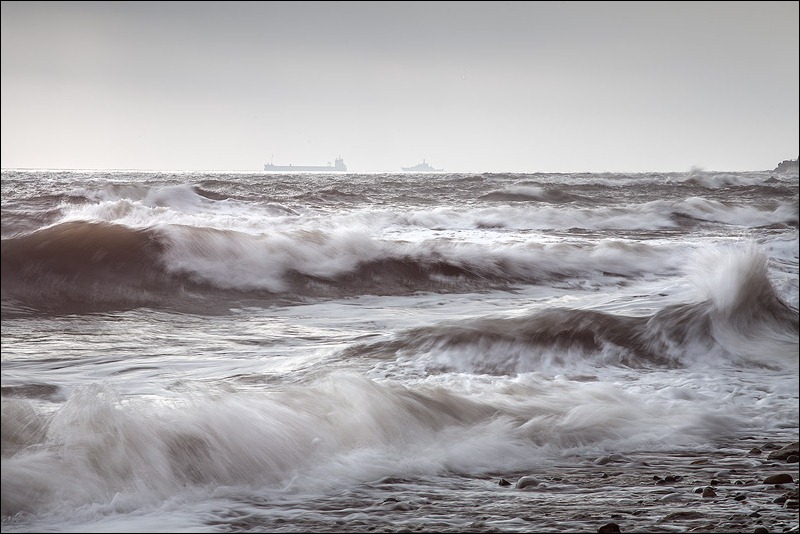 |
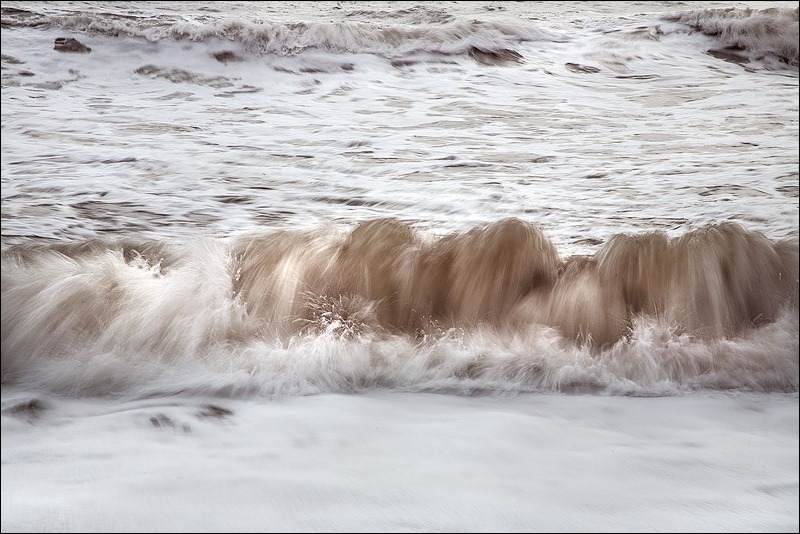 |
| I decided to walk up along the beach looking for any other photo opportunities but, and I don’t say this often, unfortunately the sun started coming out and as the clouds started to disappear, so did the chances of achieving the shots I had hoped for. I did stop off on a few occasions to take some shots right at the waters edge. The idea of doing this kind of photography when the tide is going out is, at least theoretically, the waves coming in aren’t as strong as if the tide was coming in. However, every now and then you do get one big wave which of course did happen. I left my camera bag and filters out scattered at a place further up and moved down with my camera to take some ‘close ups’ of the waves coming in. When you’re looking through a wide angle lens, everything looks much further away and one wave came quickly towards me and I just managed to get out of the way in time, only to see my bag further up get hit and the back wash made off with my filters though luckily not out to sea. Luckily too, my bag was closed so the other lens was kept dry. The final two images were taken at the end of the morning by which time the sun was quite strong, so despite the 10 stop ND filter enabling me to create exposures of over a minute and a half, the brightness and reflections ruined the mood I was hoping to create. |
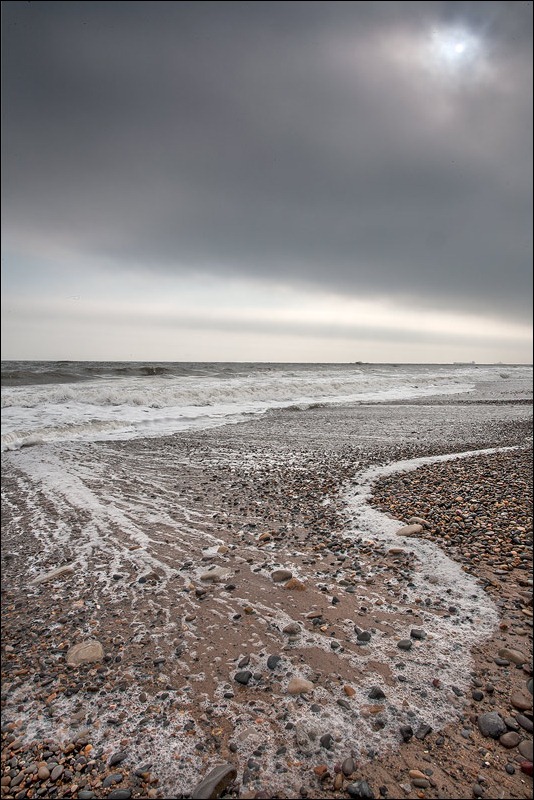 |
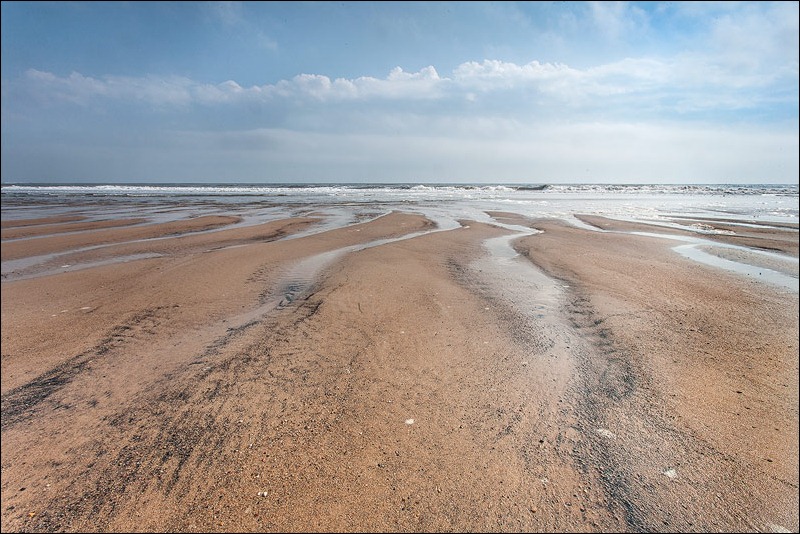 |
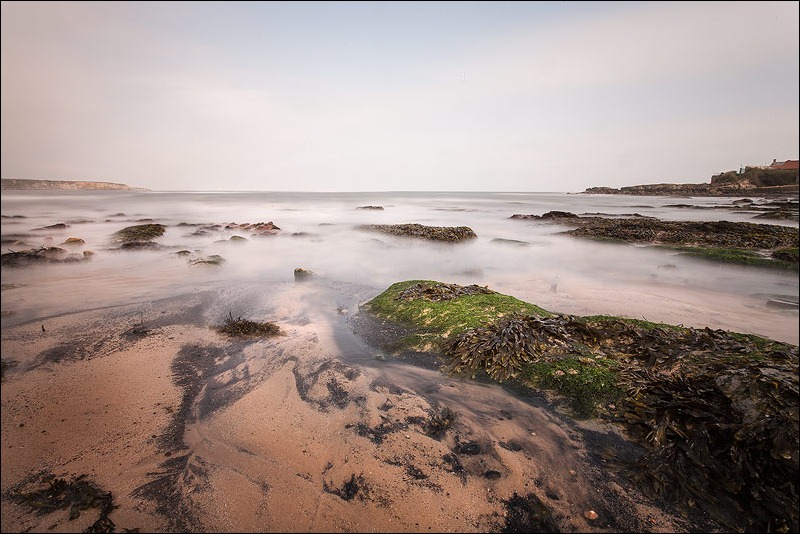 |
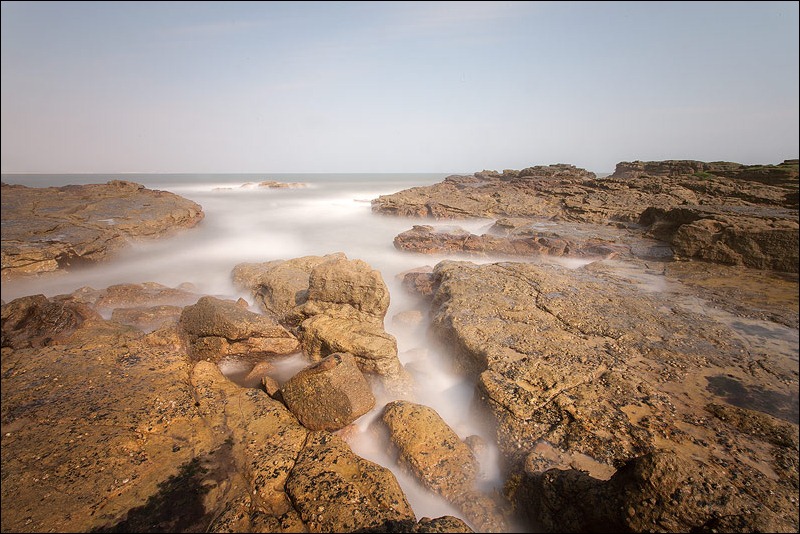 |
| Ironically, the last four times I have been to this location with the plan to photograph waders and under perfect conditions, there has been none. Today, without any long lens at hand, the beach was full of Turnstones and Dunlins! Despite the lack of any real success, I’m still pleasantly surprised by the Canon 5D which I have had now for over 6 years and still produces great images. You read in the various online forums that the cheapest full frame camera is over £1000 but they don’t take into account second hand. Both this and the MkII I have seen sold at £350 and £800 respectively. |
Monday 21 April 2014
Saturday 19 April 2014
A None too Photogenic Bird
| Last week I spent time photographing a pair of Great Crested Grebes under dull lighting conditions and came up with some nice images of what turned out to be a very photogenic bird. This week I tried to photograph a bird that I have always had difficulty in achieving good results with, the Pied Wagtail. One of the worse conditions I’ve found is, strangely, bright midday sunlight but set against a mixture of reflective rocks and dark seaweed and areas of shadows. Combine this with a small, black and white bird that is constantly moving around this environment and you have a real photographic challenge, one I have to admit, I haven’t managed to overcome. Also oddly, the final image of the subject always seems to be slightly soft, not very sharply in focus. Last year I had the same opportunity to photograph this bird, same location, same weather conditions, almost the same time of year, but with a different lens – the Canon 400mm – but which gave the same results, so it’s not the lens. I had the x1.4 converter attached, but I also did last week and, in fact, have so around fifty percent of the time with this lens without issues so that can’t be the problem by itself. |
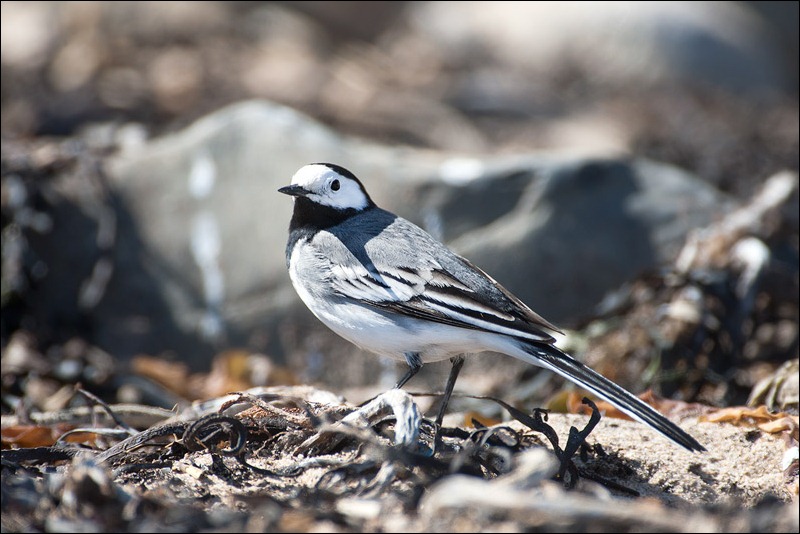 |
|
For most of the time I kept the ISO at 800 to ensure a fast shutter speed at all times including when I was giving it over exposure compensation. 1/1600 should prevent most camera shake even with a 500mm lens with a converter attached and, although the camera wasn’t on a tripod or even a monopod (I needed mobility) it was well supported between my knees as I sat down – a well trusted method that has worked for me in the past. These photos are also small web images, so not showing the true defects that I can see on a full size monitor at 100% crops. |
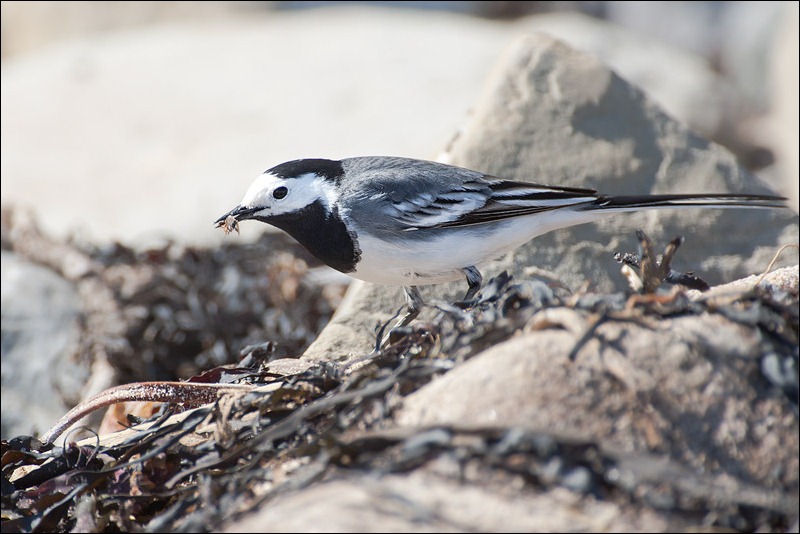 |
|
As I loaded the two cards worth of images into the Lightroom software on my computer, I was deleting the images as quick as they were showing and just gave up after deleting 400 images. There wasn’t one image that I was really happy with and the few that were ‘ok’ will need a bit of work on to get them to look half decent. (The reason for so many images taken was that I was trying to catch the bird catching a fly, achieving that special shot– with no success). All in all, the worst ratio of photos taken to output that I have ever done, by a very long way!
One of the other problems caused by the conditions was the ‘bokeh’ or background focusing effect. The highlighted areas particularly caused by the seaweed, looked ugly to me and attributed to ruining the final image. I’m not sure, maybe I just have a mental blockage when it comes to photographing this particular bird, that every image I took looked wrong to me. It reminds me of sometimes when I tune my guitar – it will just sound out of tune regardless. The following imageS then are probably the best of the bunch with a quick bit of work done of them. |
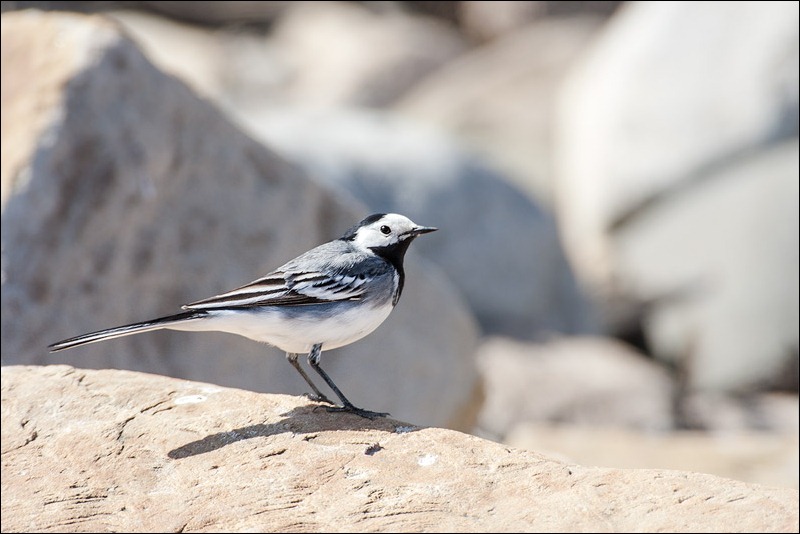 ISO 800 f 7.1 at 1/1250 |
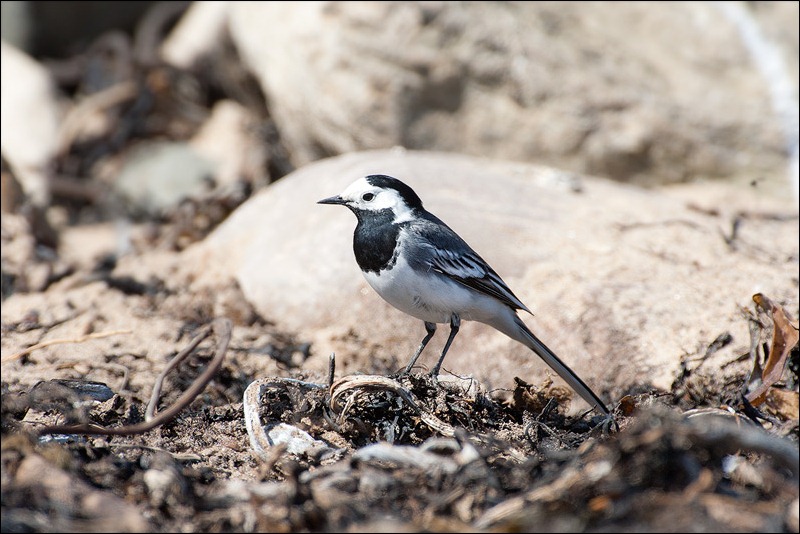 ISO 800 f 9 at 1/1250 |
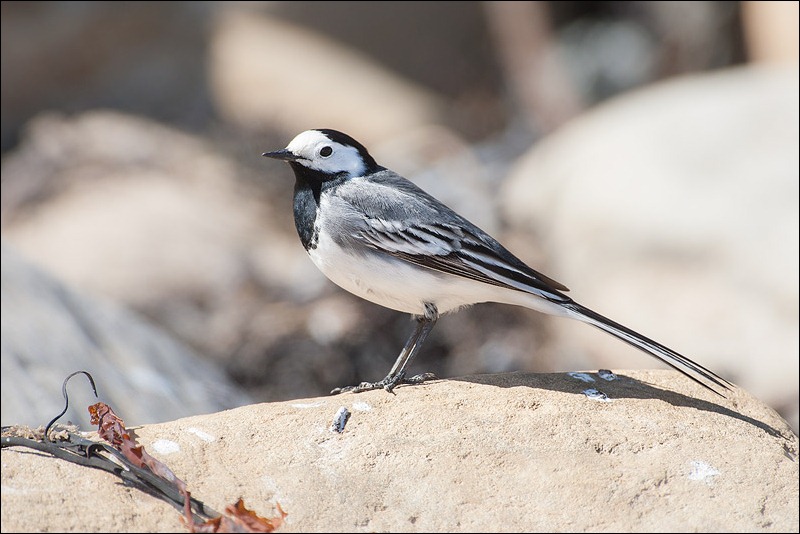 ISO 800 f 9 at 1/800 |
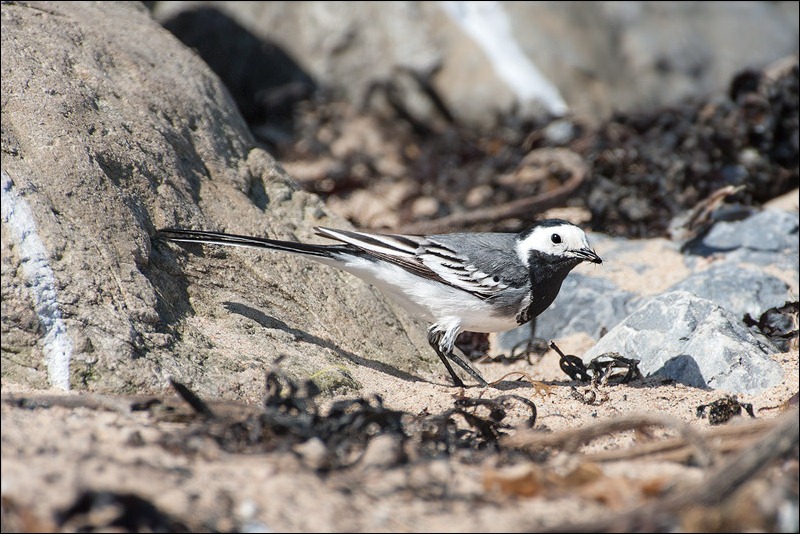 ISO 800 f 9 at 1/2000 |
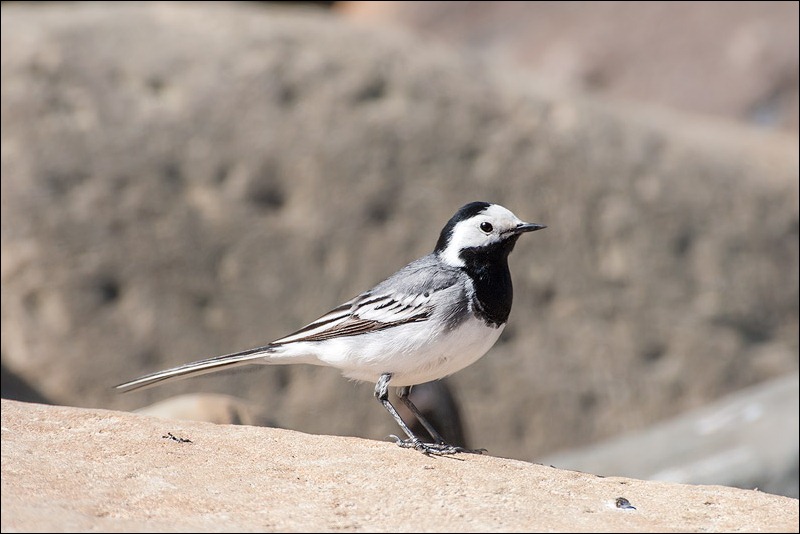 ISO 800 f 9 at 1/2000 -1/3 |
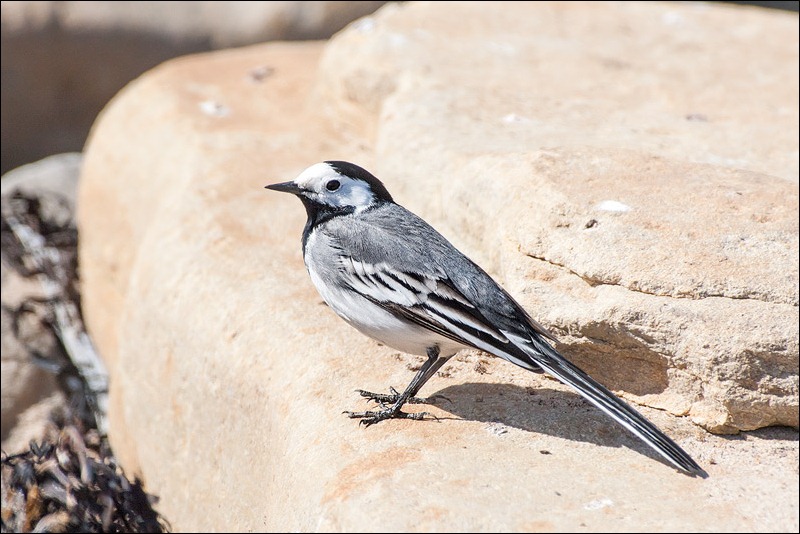 ISO 800 f 9 at 1/3200 -1/3 |
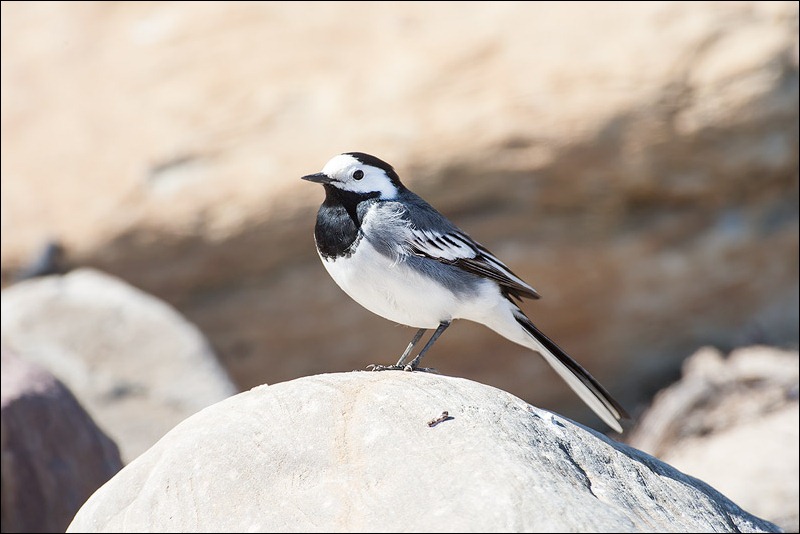 ISO 800 f 9 at 1/800 |
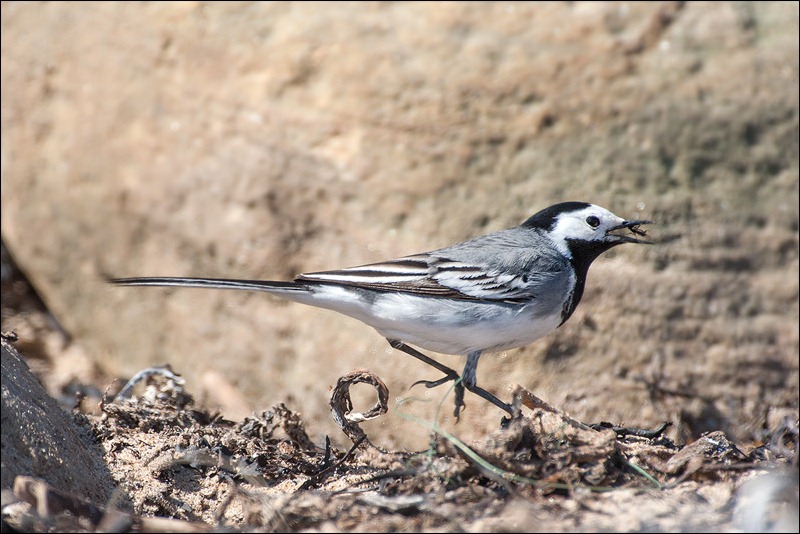 ISO 800 f 9 at 1/1600 |
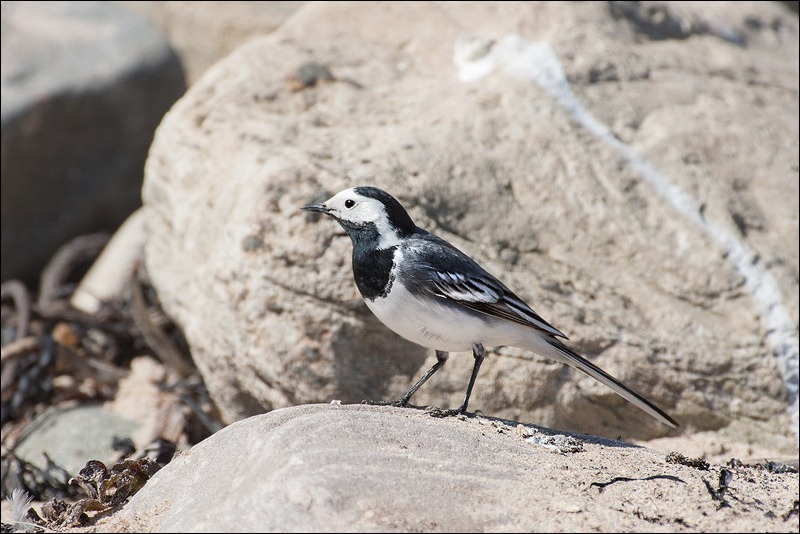 ISO 800 f 9 at 1/1250 |
| As always, photographing nature, apart from often being difficult and frustrating, is not the only reason for being interested in it, but for simply watching it. It was clear this wagtail had it territory along this part of the beach, moving back and forth and seeing off any intruders which included other wagtails. Walking past this part of the beach it wasn’t even obvious that there was any birds in and around the rocks and seaweed. The black and white plumage gives this bird quite good camouflage. It was obvious why it was there too, lots and lots of flies. Often the bird would just stand them and would just need to snap at them as they flew past. They were also all over me as I sat there photographing the bird. It was impossible to predict when the bird would go for a fly, hence no successful images of this action – just the results. |
Monday 7 April 2014
The Posh Neighbours
| There are some birds which have a special attraction to me to watch or photograph or both – the Kingfisher with its vivid colours and fishing skills, the Heron for its patience, the Kestrel with its hovering ability, the Puffin for its charm, the Short Eared Owl for those eyes and my favourite the Red Kite, gliding effortlessly overhead. Well, now I can add another bird. The Great Crested Grebe. I had the pleasure of watching a pair recently, the first time I’ve really done so and they stood out from all the other various birds on the lake, majestic and handsome with a bit of elegance thrown in. I spent the best of nearly four hours watching and photographing them. The two of them were courting each other and barely left each others side except when diving for fish, of which I was surprised just how long under water they could spend and how far they could swim. At one point, one of them went under and I though must have drowned as it was a good few minutes later when it eventually re-appeared some way away. While the various geese, ducks and Coots spent a lot of time squabbling amongst each other, these two ignored the rest and just spent there time feeding, preening and displaying to each other. Definitely a class act. |
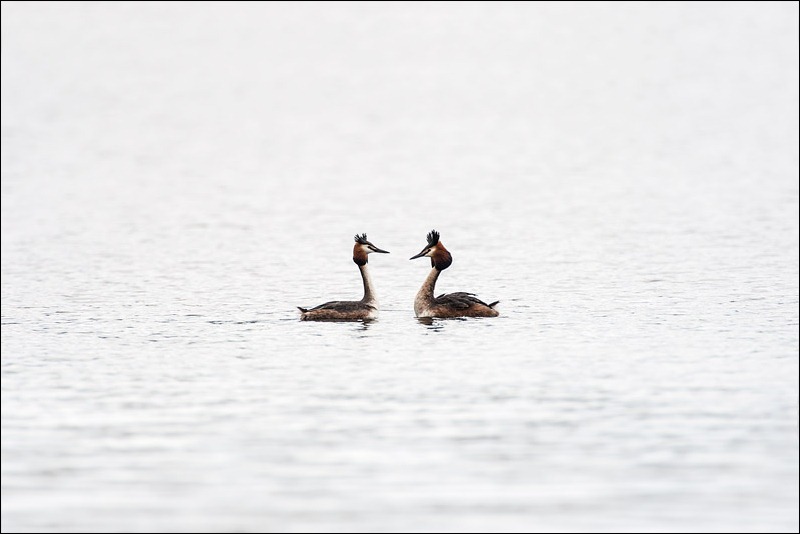 |
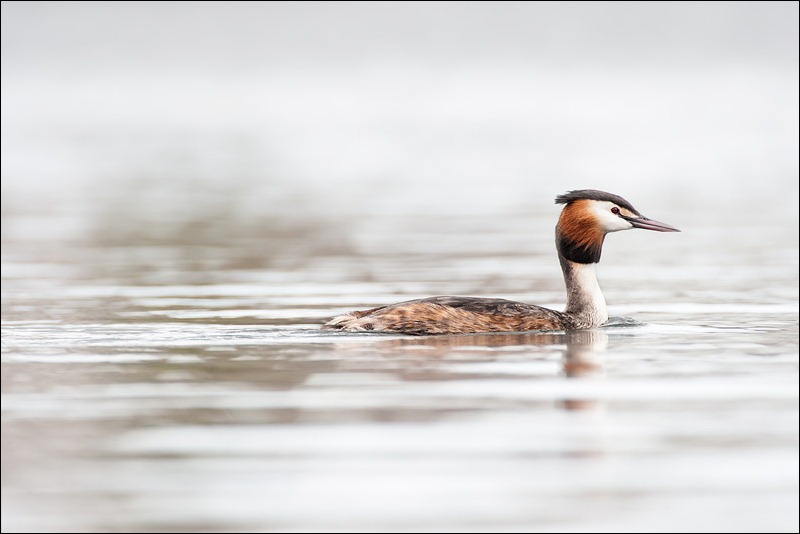 |
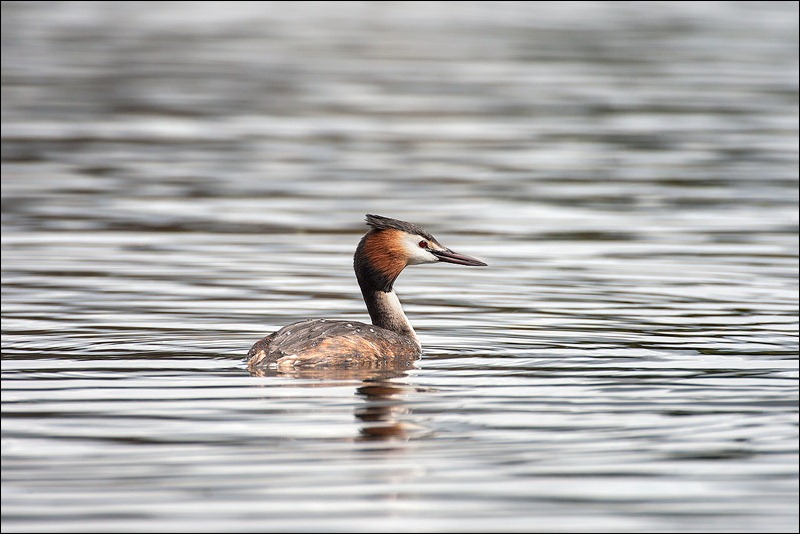 |
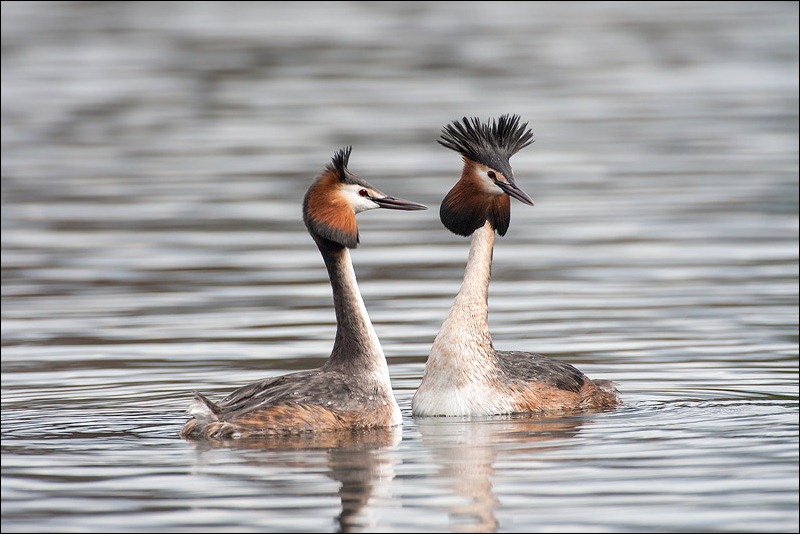 |
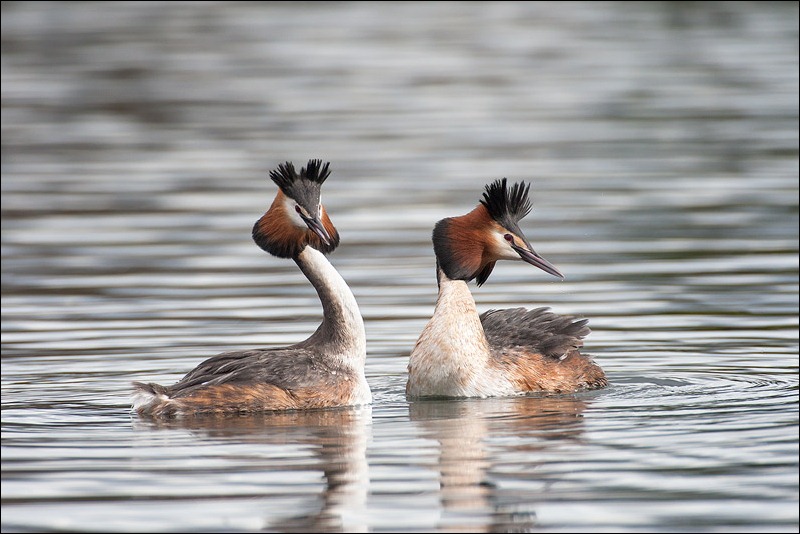 |
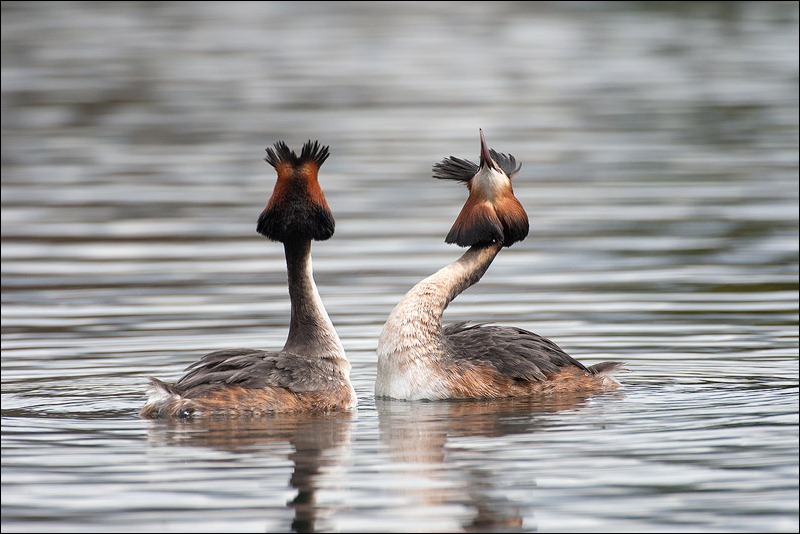 |
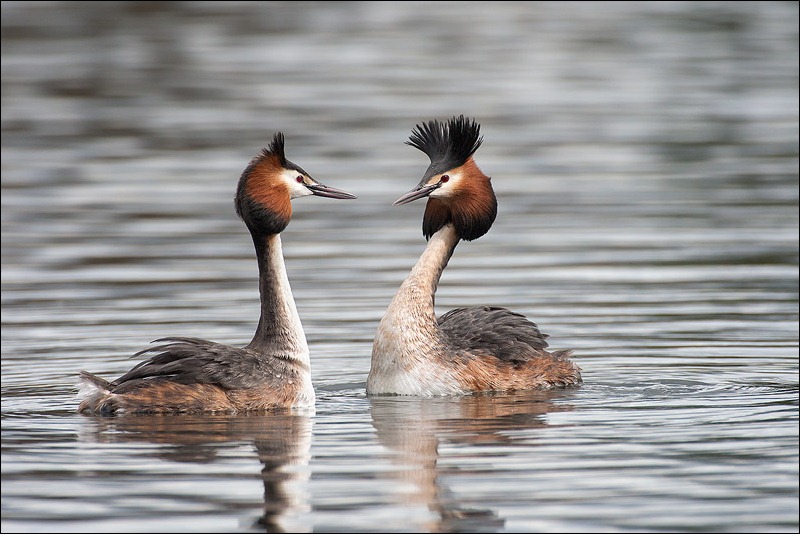 |
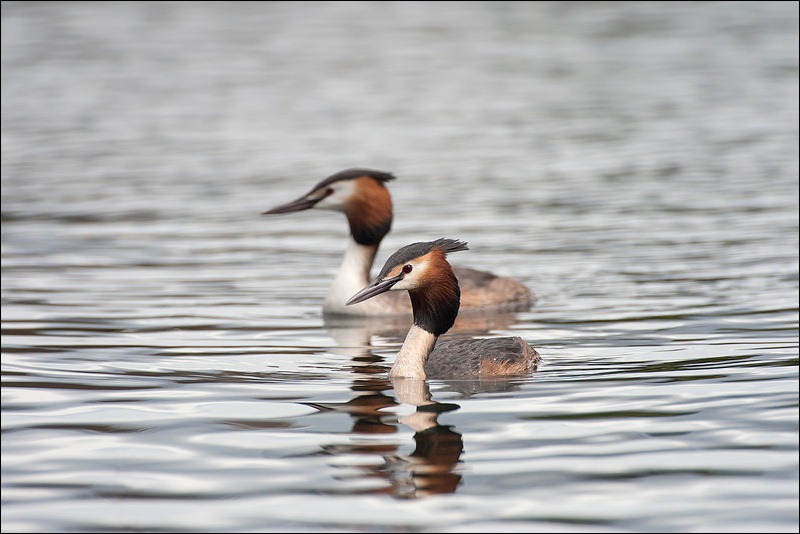 |
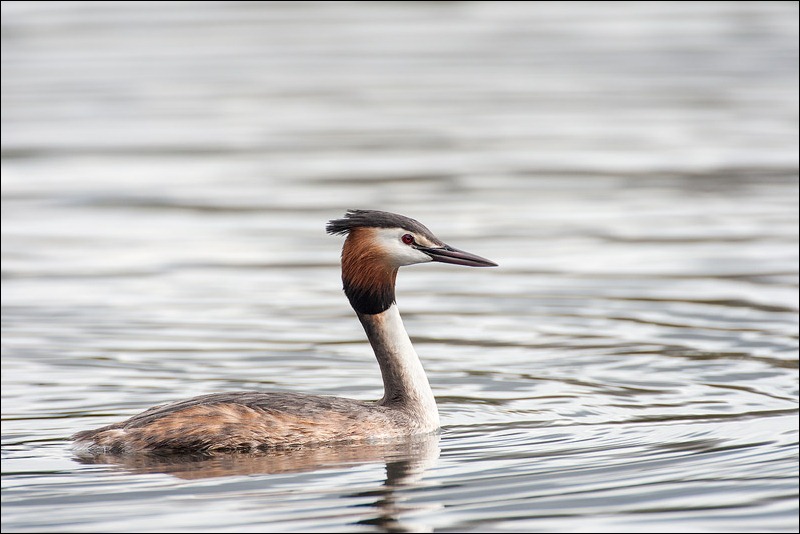 |
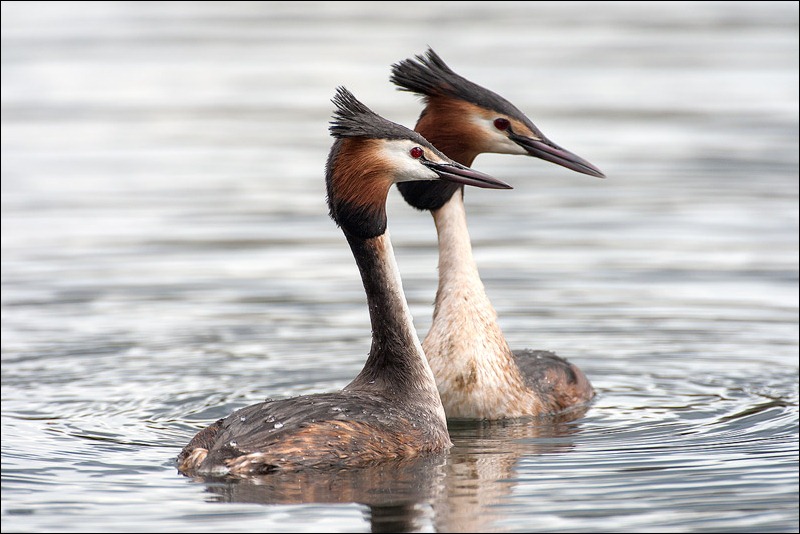 |
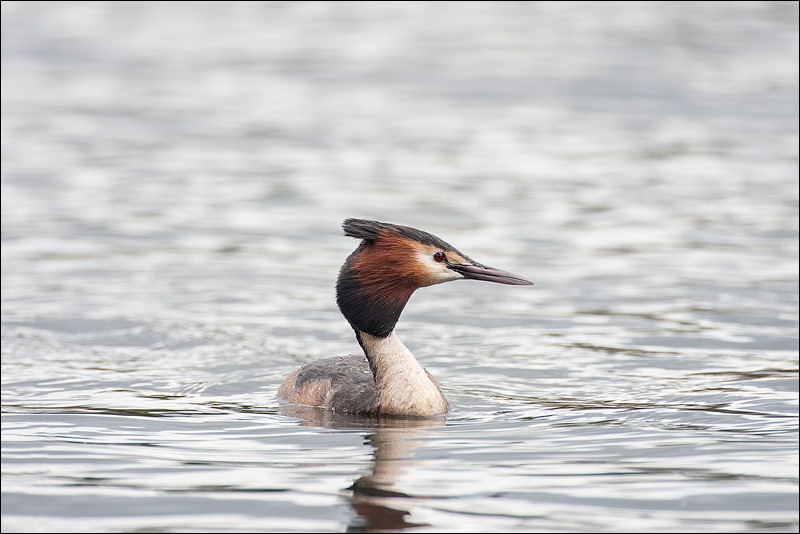 |
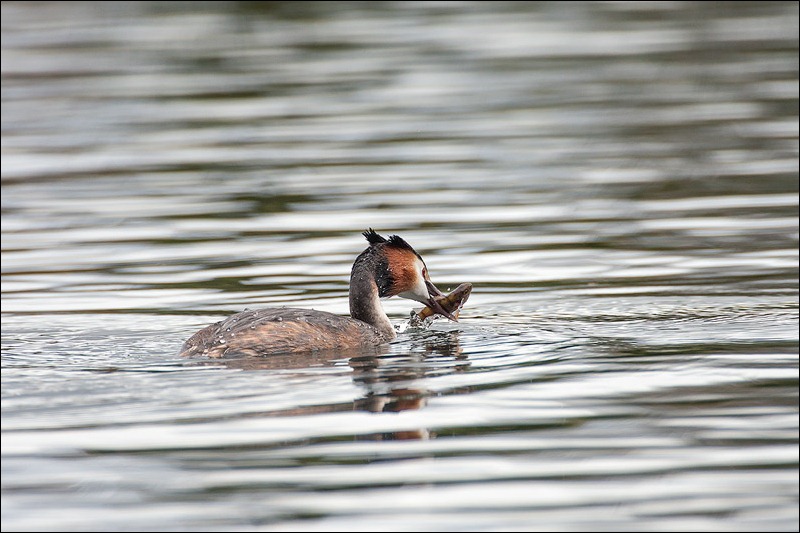 |
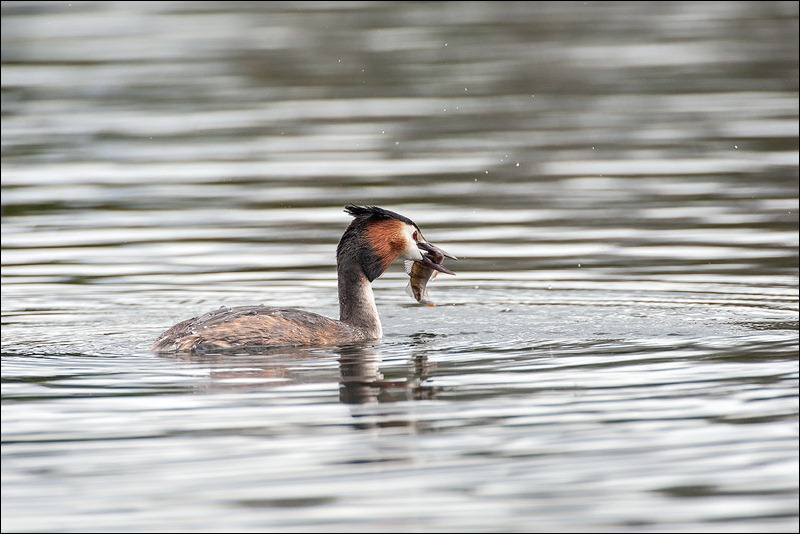 |
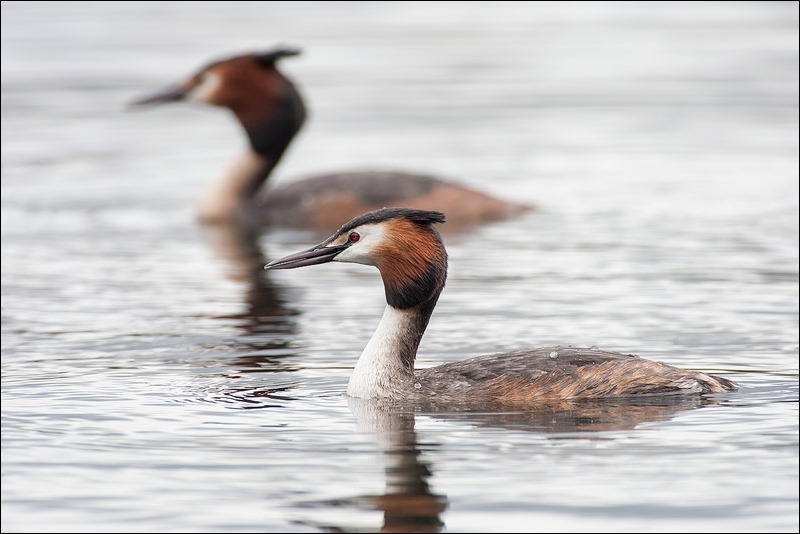 |
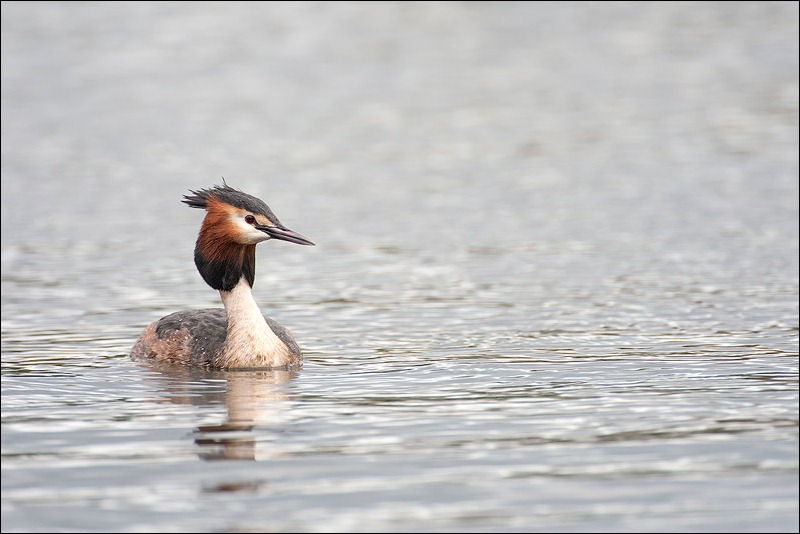 |
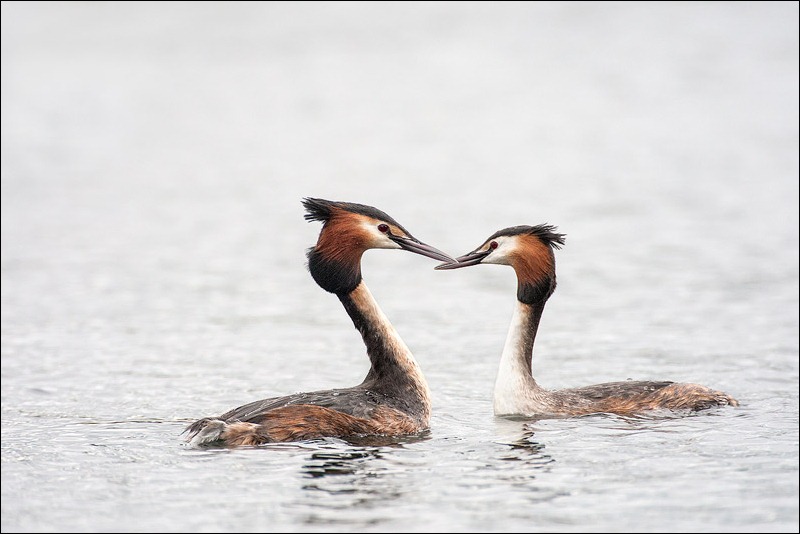 |
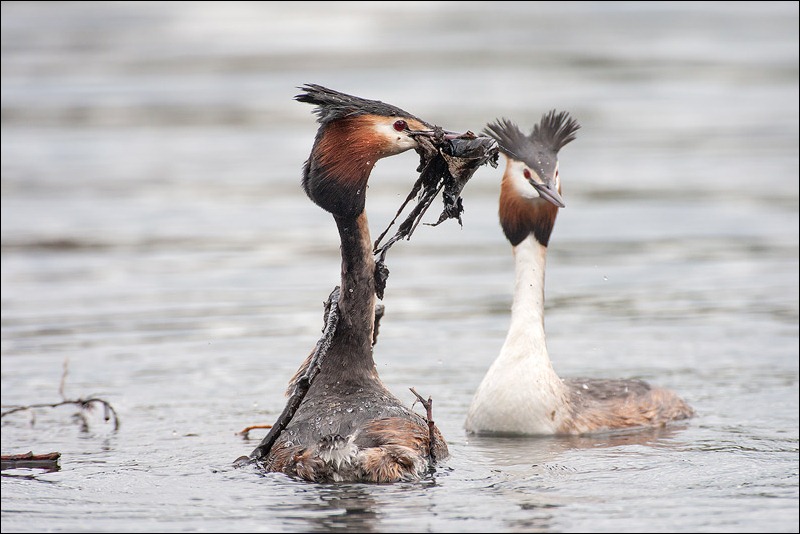 |
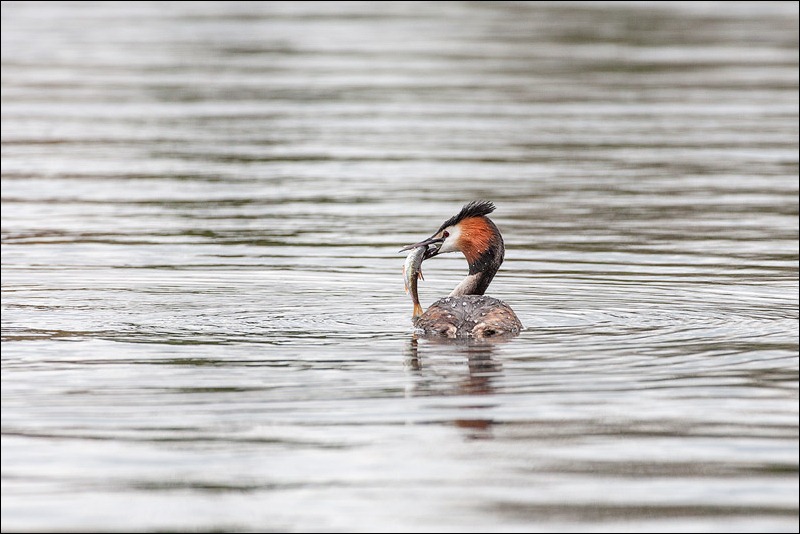 |
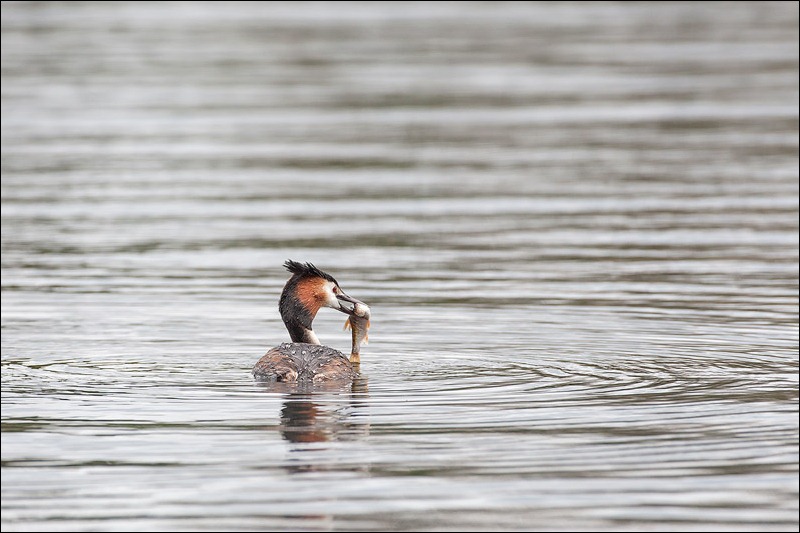 |
Sunday 6 April 2014
Hiding in a Hide
| Anyone who reads this blog knows I’m not a particular fan of using hides although I do sometimes – usually as a stop off while out and about or in Winter, as a place to get some respite from the weather. I can sit for hours outside waiting for the opportunity to see an animal, but do the same in a hide and I’m completely bored. I think because when inside one, you are removed from nature and the environment, just viewing it through a window of a large wooden structure. There is another reason and that, ironically is other photographers. To be fair it’s by no means all as, over the years I have met some really nice and interesting ones and they can be a good source of sharing knowledge, but there seems to be with the advent of popular digital photography a new breed of photographers. Combine this with Flickr and you have photographers who seem to ‘collect’ images, usually of birds and particularly of more unusual or exotic ones, which are then to be shown like a ‘badge of honour’. I recently made a trip to a hide in the hope of specifically seeing and photographing Kingfishers as my luck this year has consisted of glimpses or distant views. It was a damp and miserable day so I thought few would out and about and in the hide, but it was full of photographers obviously hoping for the same sight as me. Unfortunately there was little chance of a good window seat, so I just sat at the back window and couldn’t help but listen to the others talking. Most of them had been there for a few hours already on the day and had been coming in day after day this week and, a few, the week before as well. I do admire their dedication and one of them was showing his previous successful images of a Kingfisher on his ipad, but it did make me again, wonder. Recently in the news there was a situation in Florida where a well known, professional photographer was disturbing a protected bird by (apparently) delivery making them fly off their nesting area so his tour of other photographers he had brought along could photograph the bird in flight. Obviously, this does not compare with someone who simply enjoys spending a lot of time in a hide, but I keep wondering why do people take wildlife photographs? Everyone will have their own reasons and as far as I’m concerned as long as they are enjoying themselves and don’t disturb the wildlife, then good for them. But it also brings me back to why I generally feel uncomfortable being around a group of what I call ‘drive by photographers’ (They drive to a hide or location but never walk more than a few metres from their cars). Dressed for the most part head to foot in camouflage, many had some very expensive looking gear, it seemed more like a social gathering with little interest in what was happening outside except for the odd appearance of the Kingfisher or quiet periods when a few would take some pictures of the more common birds around. One of the things I am very conscious about is that public hides are for everyone, including non photographers so having one that is chocker block full of them that have been camped there for hours, often means that other people who want to simply watch any and all wildlife, feel a bit intimidated. An elderly couple did come in and promptly left. It was interesting just to be an observer and as the crowd thinned out I was able to get a ‘front view’ seat. The guy next to me was rattling off shots like there was no tomorrow. When the Bullfinch below landed on the perch he took four bursts of four frames followed by another two in the space of around five seconds. I took three. In old money his had taken the equivalent to a role of film! Maybe coming from a film background, I still take my shots more sparingly and with thought. Rather than just shoot at ten frames per second, I had my camera set so could take one shot but if I kept my finger down, it would do around five. This way I could observe the bird and wait until I thought the ideal pose was met – light in the eyes and a nice portrait. I looked at his LCD as he was checking his images and he had a lot of images of the head looking away or with his back to the camera but also had a few similar to mine that I could see. I guess it’s all part of the ‘spray and pray’ culture of the modern photographer but it reminded me of the story I had heard about a mimic bird who was heard in a remote part of, I think Australia, and it was making the sound of a cameras rapid drive! There is another disadvantage of using a hide. The bird images below show them on a perch that is probably now very well known on Flickr and other sites so originality can be lost. I will carry on using hides but they don’t replace the enjoyment of solitude and the mixture of excitement and tranquillity of actually being out in nature, of using your own skills as a naturalist and photographer to achieve an image or just simply seeing a wild animal in its natural surroundings. |
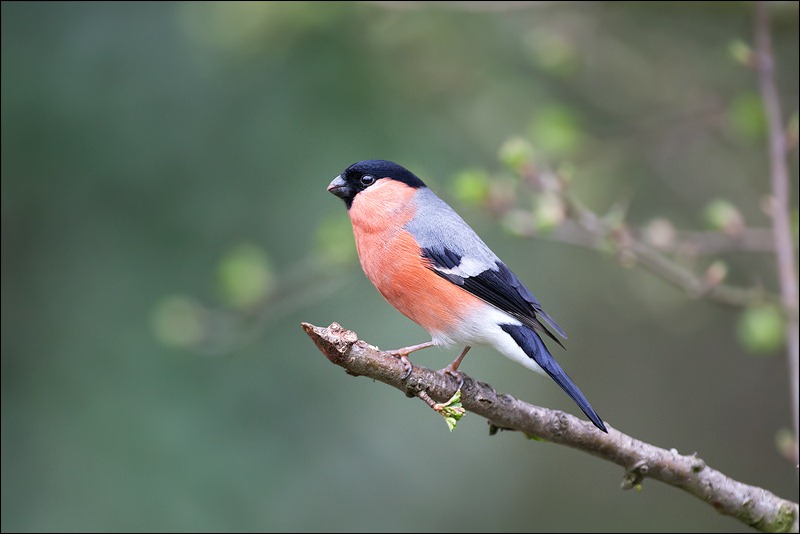 |
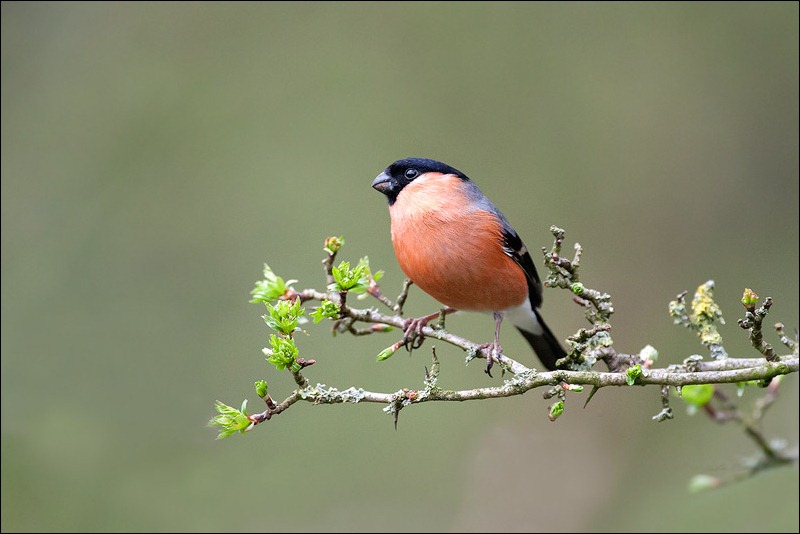 |
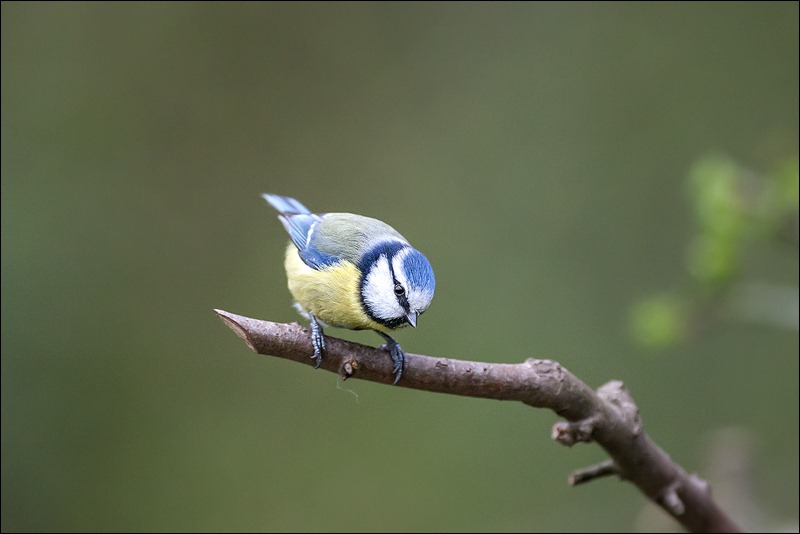 |
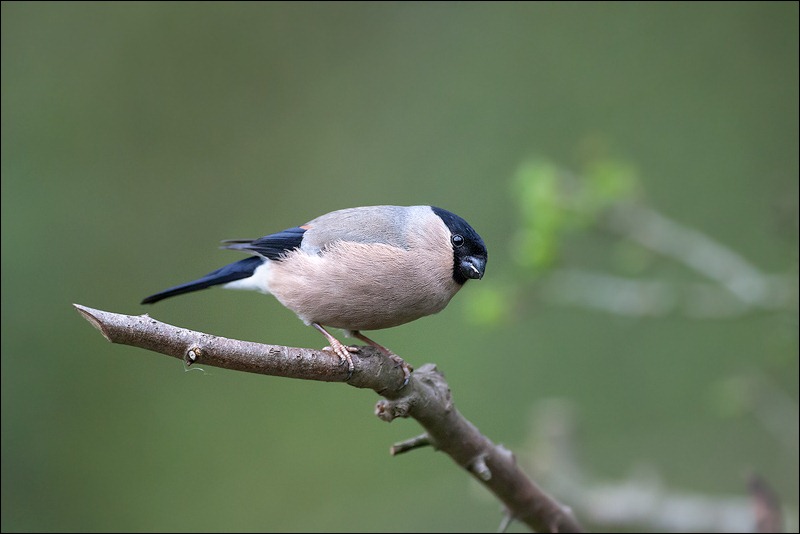 |
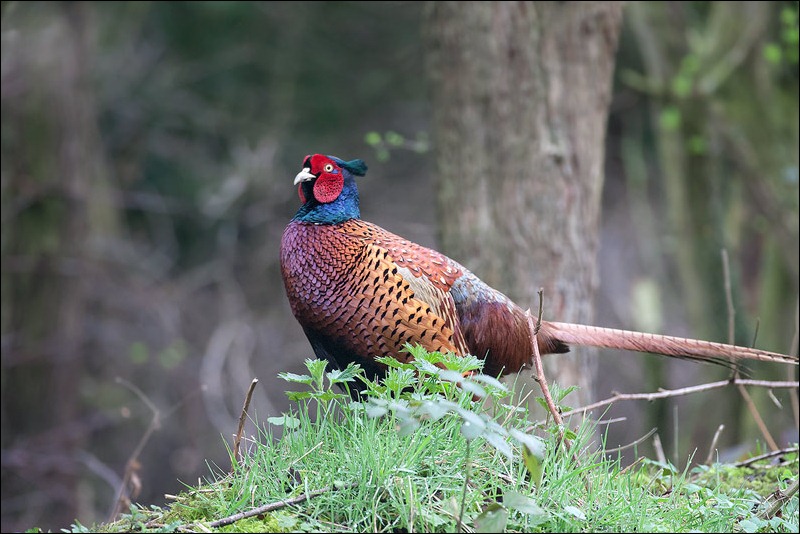 |
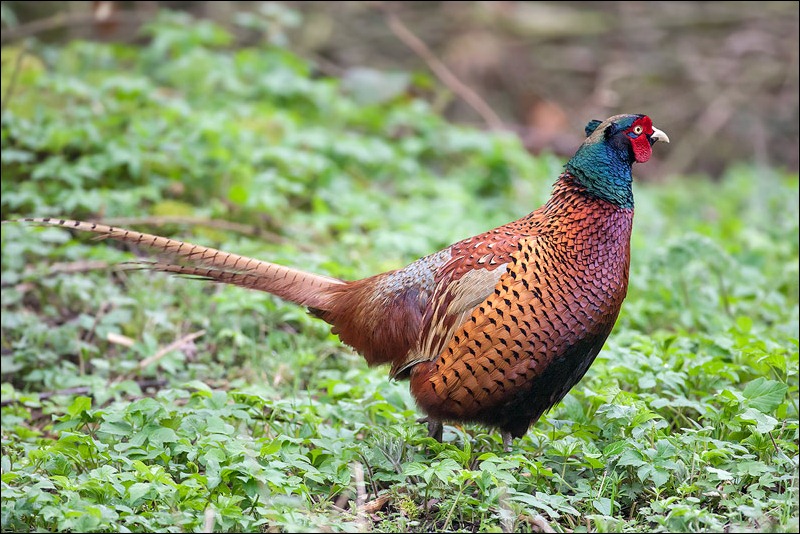 |
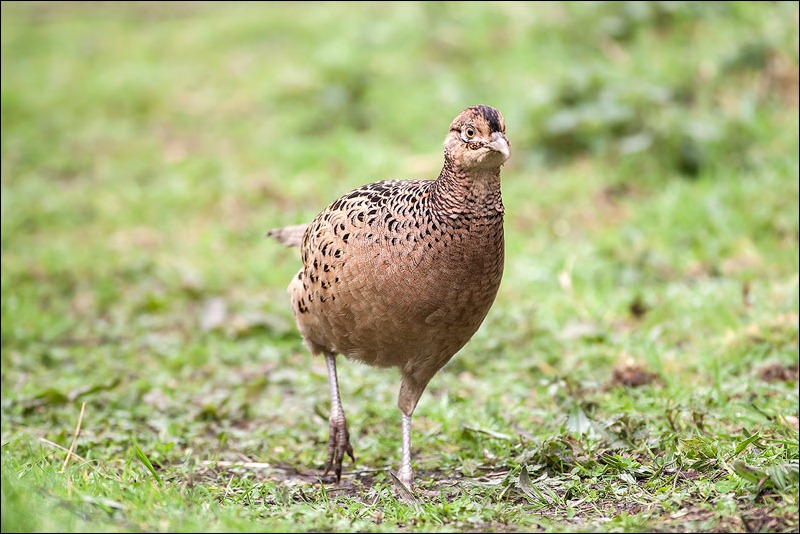 |
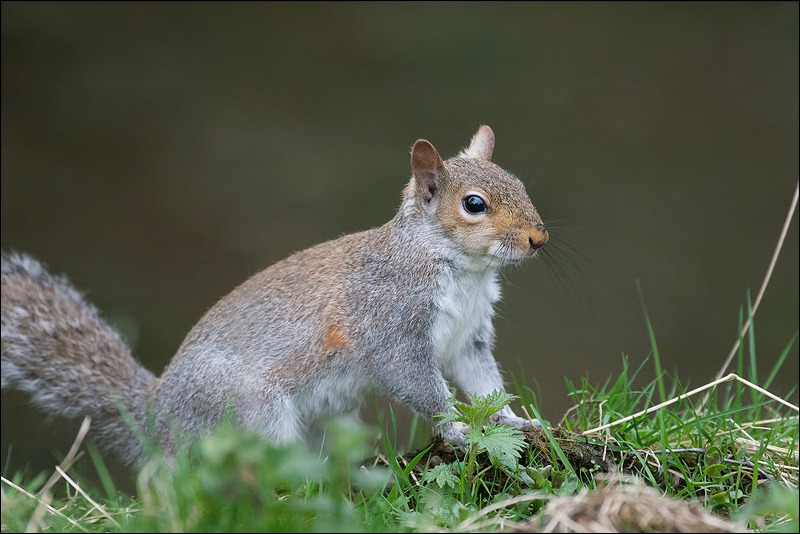 |
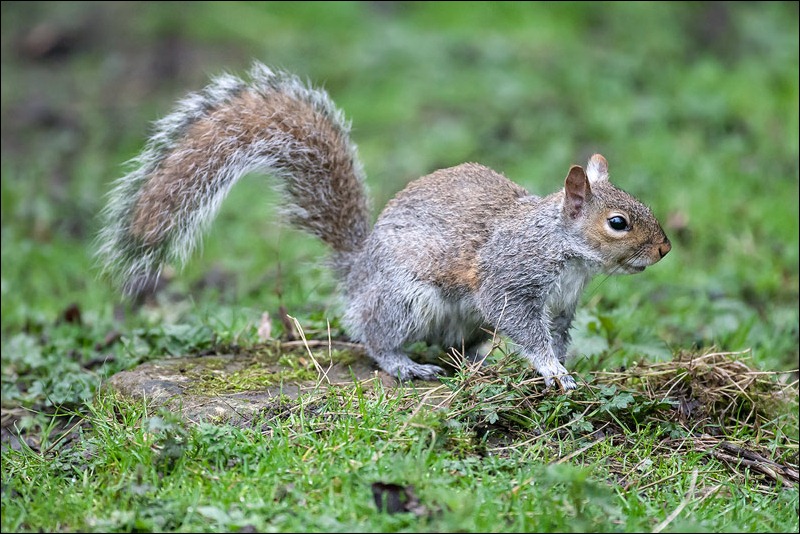 |
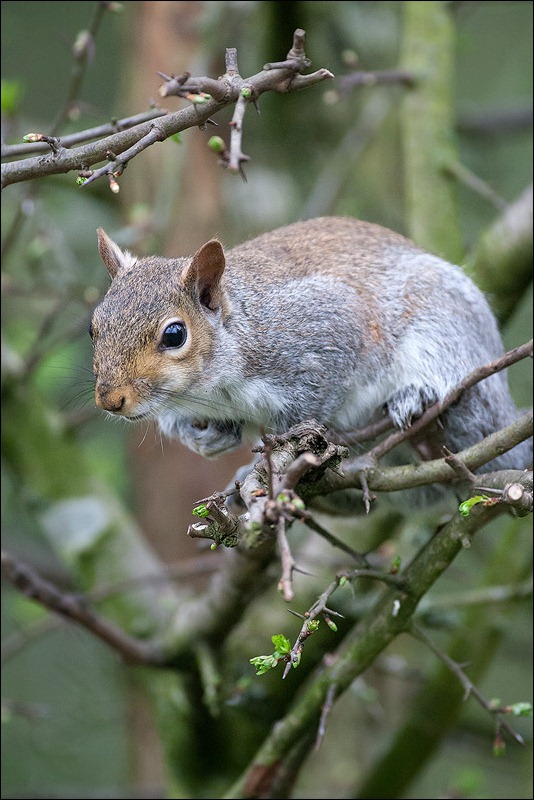 |
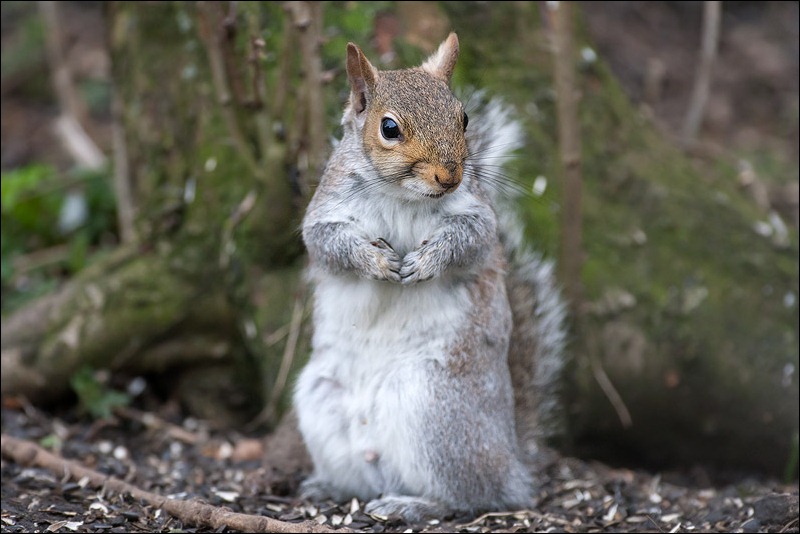 |
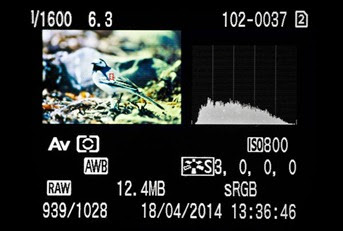 The scenario was that I was on a beach, a bright sunny day with a Pied Wagtail catching a plentiful supply of flies. It was constantly on the move going between the open with a direct sun from the high left, to areas of shade between the rocks. The image left is the cameras histogram of the image above. The image preview hasn’t been reproduced accurately here but it does show the rest of the photographs details including the focus point and exposure of which you can see that neither should cause a major problem.
The scenario was that I was on a beach, a bright sunny day with a Pied Wagtail catching a plentiful supply of flies. It was constantly on the move going between the open with a direct sun from the high left, to areas of shade between the rocks. The image left is the cameras histogram of the image above. The image preview hasn’t been reproduced accurately here but it does show the rest of the photographs details including the focus point and exposure of which you can see that neither should cause a major problem.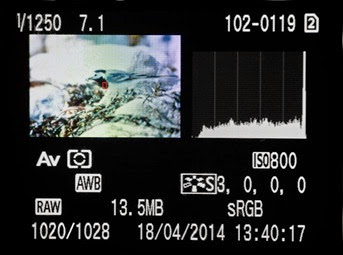 This next histogram does show a ‘spike’ on the right hand side, meaning blown out highlights, in this case the sun reflecting off the white rock in the background. The shutter speed again should be fast enough and I even stopped down the aperture by a stop, but the image looks flat, soft and lacking contrast, which if I increased with this already being a ‘black and white’ bird, would make the image worse. I’m guessing the poor images are a result of a combination of the circumstances and conditions as I often experience any one of these regularly on separate shoots without any problems.
This next histogram does show a ‘spike’ on the right hand side, meaning blown out highlights, in this case the sun reflecting off the white rock in the background. The shutter speed again should be fast enough and I even stopped down the aperture by a stop, but the image looks flat, soft and lacking contrast, which if I increased with this already being a ‘black and white’ bird, would make the image worse. I’m guessing the poor images are a result of a combination of the circumstances and conditions as I often experience any one of these regularly on separate shoots without any problems. 



